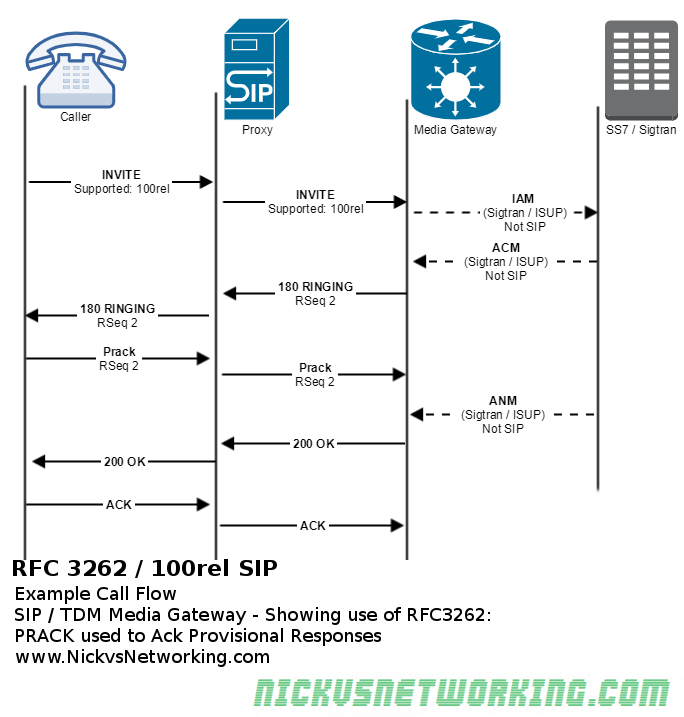When a final response, like a 200 OK, or a 404, etc, is sent, the receiving party acknowledges that it received this with an ACK.
By provisional responses, such as 180 RINGING, are not acknowledged, this means we have no way of knowing for sure if our UAC received the provisional response.
The issues start to arise when using SIP on Media Gateways or inter-operating with SS7 / ISUP / PSTN, all of which have have guaranteed delivery of a RINGING response, but SIP doesn’t. (Folks from the TDM world will remember ALERTING messages)
The IETF saw there was in some cases, a need to confirm these provisional responses were received, and so should have an ACK.
They created the Reliability of Provisional Responses in the Session Initiation Protocol (SIP) under RFC3262 to address this.
This introduced the Provisional Acknowledgement (PRACK) and added the 100rel extension to Supported / Requires headers where implemented.
This means when 100rel extension is not used a media gateway that generates a 180 RINGING or a 183 SESSION PROGRESS response, sends it down the chain of proxies to our endpoint, but could be lost anywhere along the chain and the media gateway would never know.
When the 100rel extension is used, our media gateway generates a 18x response, and forwards it down the chain of proxies to our endpoint, and our 18x response now also includes a RSeq which is a reliable sequence number.
The endpoint receives this 18x response and sends back a Provisional Acknowledgement or PRACK, with a Rack header (Reliable Acknowledgement) header with the same value as the RSeq of the received 18x response.
The media gateway then sends back a 200 OK for the PRACK.

In the above example we see a SIP call to a media gateway,
The INVITE is sent from the caller to the Media Gateway via the Proxy. The caller has included value “100rel” in the Supported: header, showing support for RFC3262.
The Media gateway looks at the destination and knows it needs to translate this SIP message to a different a different protocol. Our media gateway is translating our SIP INVITE message into it’s Sigtran equivalent (IAM), and forward it on, which it does, sending an IAM (Initial Address Message) via Sigtran.
When the media gateways gets confirmation the remote destination is ringing via Sigtran (ACM ISUP message), it translates that to it’s SIP equivalent message which is, 180 RINGING.
The Media Gateway set a reliable sequence number on this provisional response, contained in the RSeq header.
This response is carried through the proxy back to the caller, who signals back to the media gateway it got the 180 RINGING message by sending a PRACK (Provisional ACK) with the same RSeq number.
The call is eventually answered and goes on.